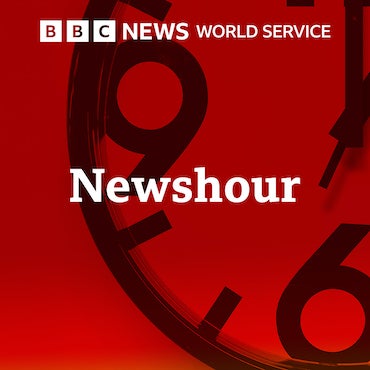Hyperbaric Oxygen Treatment for Autism?
The process of finding answers and treatments for autism has moved much more slowly than it’s rate of diagnosis. Families affected by autism often turn to unproven, alternative treatments that offer hope. Maiken Scott reports on one increasingly popular option – hyperbaric oxygen treatment.
The diagnosis of Autism has been rising at a rapid pace over the past decade. The process of finding answers and treatments has moved much more slowly. Families affected by autism often turn to unproven, alternative treatments that offer hope. Maiken Scott reports on one increasingly popular option – hyperbaric oxygen treatment.
(Photo: Joanne Rufo and son Daniel, age 6, during a hyperbaric oxygen treatment.)
[audio:100922mshbotweb.mp3]
Dr. Patrick Elliott exudes a can-do attitude. The medical director of Hyperbaric Therapy USA in Newtown Square is jovial, energetic, tanned, and he enjoys chatting with his patients in the waiting room. During hyperbaric treatment, patients breathe in 100 percent oxygen in a pressurized chamber. This can reduce inflammation, and was first used for divers suffering from decompression sickness. Elliott treats patients with various ailments – including burns and Lyme Disease – but kids with autism make up the largest portion of his clientele.
Elliott, a trained surgeon, was introduced to hyperbaric oxygen because of his sons. His twins were diagnosed with autism at age two and Elliott didn’t accept the limited treatment options on offer then. He was going to make his sons better – no matter what.
Elliott: I always say that that I got into alternative medicine with our children because there was no alternative.
Convinced that hyperbaric oxygen treatments, or H-BOT for short, helped his sons tremendously, Elliott decided to pursue this approach professionally. He says it is no replacement for behavioral therapies such as Applied Behavioral Analysis and speech therapy, but makes an effective addition.
Joanne Rufo has been coming here with her six-year old son Daniel for several weeks; they are in the home stretch of the 40 treatments Elliott recommends. Rufo climbs into the oxygen chamber with her son – it’s a comfy looking clear tube, and Daniel’s biggest concern is what movie to watch:
Daniel: I want to watch Nemo!!
Rufo says standard treatments, such as occupational and speech therapy, haven’t done much for her son.
Within two weeks of starting HBOT, she started seeing results she liked:
Rufo: his eye contact was better, and he was communicating better – normally, he wouldn’t ask a lot of questions. For example when I was on the phone, he would say – who are you talking to that was something new for him to do.
Dr. David Mandell of the Center for Autism Research at the Children’s Hospital of Philadelphia doesn’t quite buy the hype surrounding hyperbaric oxygen:
Mandell: Part of my training is to be a skeptic, and I am certainly skeptical of treatments until I see the evidence of their effectiveness, and that’s what makes me a believer.
He says what little research there is on this approach does not suggest that HBOT works in the treatment of autism. So far, there have been two randomized controlled trials of HBOT and autism that have shown little or no effect.
But Mandell says since parents are utilizing these methods anyway, more studies are needed so that research will catch up with practice:
Mandell: families hear theories about what treatments work, and are really desperate for a change in their children, very understandably so, and are often are willing to try anything
Dr. Dan Coury of the Autism Speaks advocacy organization says research might not have much impact on parents who believe in hyperbaric therapy.
Proof or no proof, Joanne Rufo says she will try whatever might make a difference in Daniel’s life. She has another son, and works full-time, and says paying for Daniel’s HBOT treatments at $140 a shot has been tough:
Rufo: You just don’t take vacations, you don’t drive an expensive car, you just sacrifice, you don’t go out to dinner, but when you see the changes in him, it’s worth it.
Dr. Patrick Elliott says 60 percent of his patients with autism show improvements:
Elliott: We’re looking for good stuff, we’re not looking for subtleties. If you are going to go into this chamber for 40 hours, for eight weeks, spend the money, like with my kids, I want to see something good. And with most kids, we really do.
He says today’s alternative treatment could well become tomorrow’s mainstream approach.
And David Mandell admits – right now, the mainstream scientific community doesn’t have much to offer for parents:
Mandell: We focus tremendously on what the causes of autism are, and why the prevalence is increasing, and we don’t focus enough on what we need to do to help these children integrate into their communities, and to optimize their quality of life, and their families’ quality of life.
Joanne Rufo says she constantly hears about new therapies from other parents:
Rufo: There’s anything from oxygen chamber to swimming with dolphins to riding horses that people swear by, you don’t just stop looking for something that’s going to help him learn and be a part of life – it’s not going to end.
WHYY is your source for fact-based, in-depth journalism and information. As a nonprofit organization, we rely on financial support from readers like you. Please give today.

